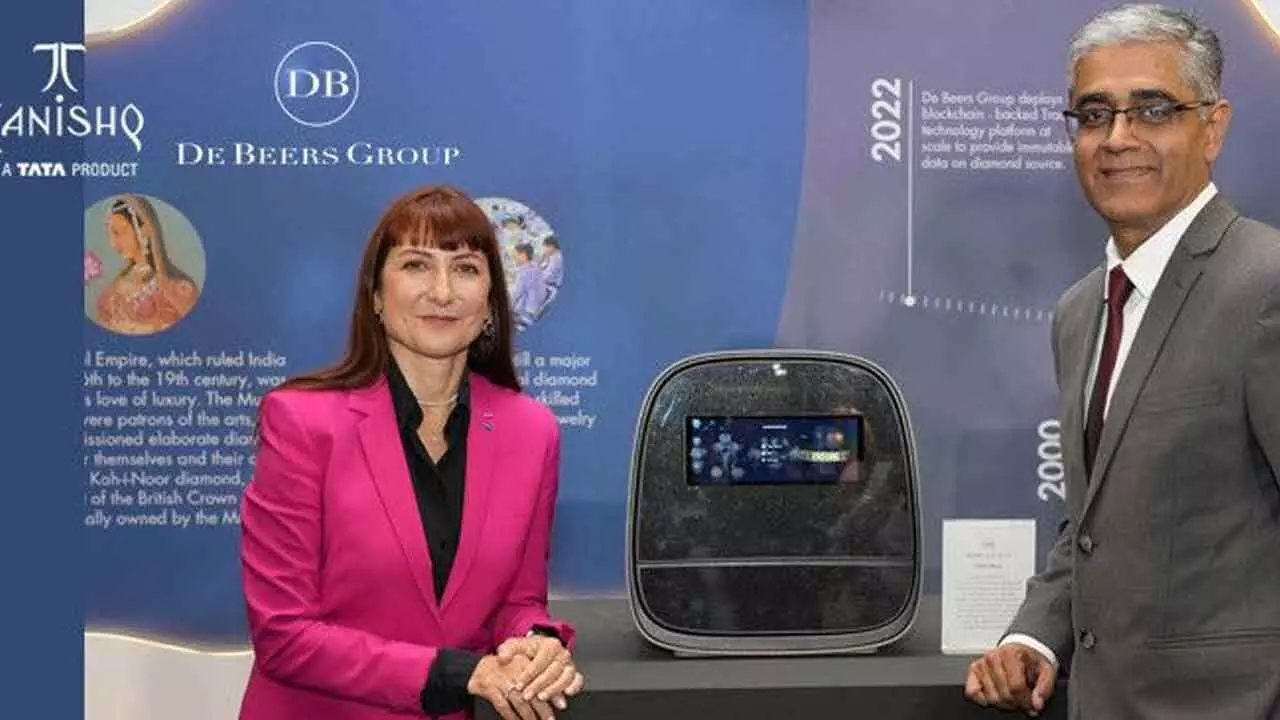Tanishq-De Beers Group collaboration will add glitter to the priceless diamonds market
Kimberlite derives its name from the South African town of Kimberley where the first diamonds were found
image for illustrative purpose

The biggest diamond that has ever been found is the Cullinan, weighing in at 530.20 carats, making it the largest cut diamond in the world
Beautiful and rare, diamonds are one of nature’s most precious treasures. Born deep in the earth many millions of years ago, they have been on an incredible natural journey ever since they have been discovered by man. They have survived molten lava and volcanic eruptions, extreme temperatures and harsh terrains, the vagaries of nature and yet they retain their unrivalled exquisiteness.
De Beers Group, the world’s leading diamond company, and Tanishq, India's largest jewellery retail brand from the Tata group, have announced a long-term strategic collaboration to connect more Indian consumers with the rarity and preciousness of natural diamonds and amplify the growing opportunity in the Indian market.
Demand for natural diamond jewellery from Indian consumers has been on the surge and now represents 11 per cent of the global demand. This has seen India replace China as the world’s second largest market for natural diamond jewellery. The collaboration will focus on building extensive consumer outreach, deepening capabilities of Tanishq’s retail staff to communicate about natural diamonds, educating consumers about authenticity, and shaping customer experiences as they explore their desire for natural diamonds and studded jewellery.
Diamonds have a unique cubic crystal lattice structure. Each carbon atom in a diamond is strongly bonded to four others, making them the hardest known natural substance. Diamonds also exhibit high thermal conductivity, are resistant to chemicals and have an exceptionally high transparency. A diamond’s melting point is 3548°C.
Although extremely rare, if a diamond contains just one speck of a foreign atom that is not carbon, this can change its colour. Red diamonds are the rarest coloured diamond. Natural diamonds were born deep below the earth’s surface in environments of extreme pressure and temperature.
When an event deep in the earth causes a part of the mantle to melt into magma, which then erupts rapidly to the surface of the earth, it transports diamonds from great depths. As the magma cools, it hardens to form the rock called kimberlite, mainly in vertical structures known as kimberlite pipes. These are the most significant source of diamonds, accounting for nearly all natural diamonds. However, of the 15 per cent of kimberlite pipes that have been discovered across the world that contain diamonds, only one per cent are economically viable, highlighting how truly rare diamonds are.
The name Kimberlite derives from the South African town of Kimberley where the first diamonds were found. Over the last 140 years, 7,000 kimberlite pipes (the rock in which diamonds can be found) have been sampled and only around 1,000 of these pipes actually contain diamonds.
Of these 1,000, only around 60 have been sufficiently rich in diamonds to be economically viable. And of these 60, only seven mines, including De Beers Group’s Jwaneng, Orapa and Venetia mines, account for most of the world’s diamonds. This proves that even over such an expanse of time how truly rare it is to find these small and glittering forever pieces.
Traditional colourless diamonds that we all picture are not the only type of diamond. Even rarer than colourless are the highly sought after coloured diamonds. Less than 1/10,000 gem-quality diamonds are natural fancy yellow and red diamonds are so rare that only around twenty to thirty are known to exist in the entire world.
Like coloured diamonds, large diamonds are also incredibly rare – a diamond over one carat in weight is one in a million. The biggest diamond that has ever been found is the Cullinan, weighing in at 530.20 carats, making it the largest cut diamond in the world.
Sandrine Conseiller, CEO of De Beers Brands, said: “India’s love affair with diamonds has flourished over thousands of years, and we are thrilled to partner with Tanishq to unlock the full potential of this vibrant market. Like De Beers, Tanishq recognises the power, preciousness and prestige of natural diamonds and combining our expertise with their deep understanding of the Indian market, we will work together to create something special to connect more Indian consumers to these natural treasures and their enduring value.”
Ajoy Chawla, CEO, Jewellery Division, Titan Company Limited, said: “Opportunities for diamonds is massive in India, given the very low penetration of studded jewellery and the rising per capita incomes in the world’s most populous country. Tanishq has been a pioneer in democratising diamond jewellery in the market for three decades and has always targeted the modern progressive woman. The diamonds are responsibly sourced in compliance with the Kimberley Process Certification Scheme (KPCS) and the Tanishq Suppliers Engagement Protocol (TSEP). The collaboration with De Beers will unlock new opportunities for both Tanishq and the diamond sector, celebrating the eternal beauty of these miracles of nature.”

